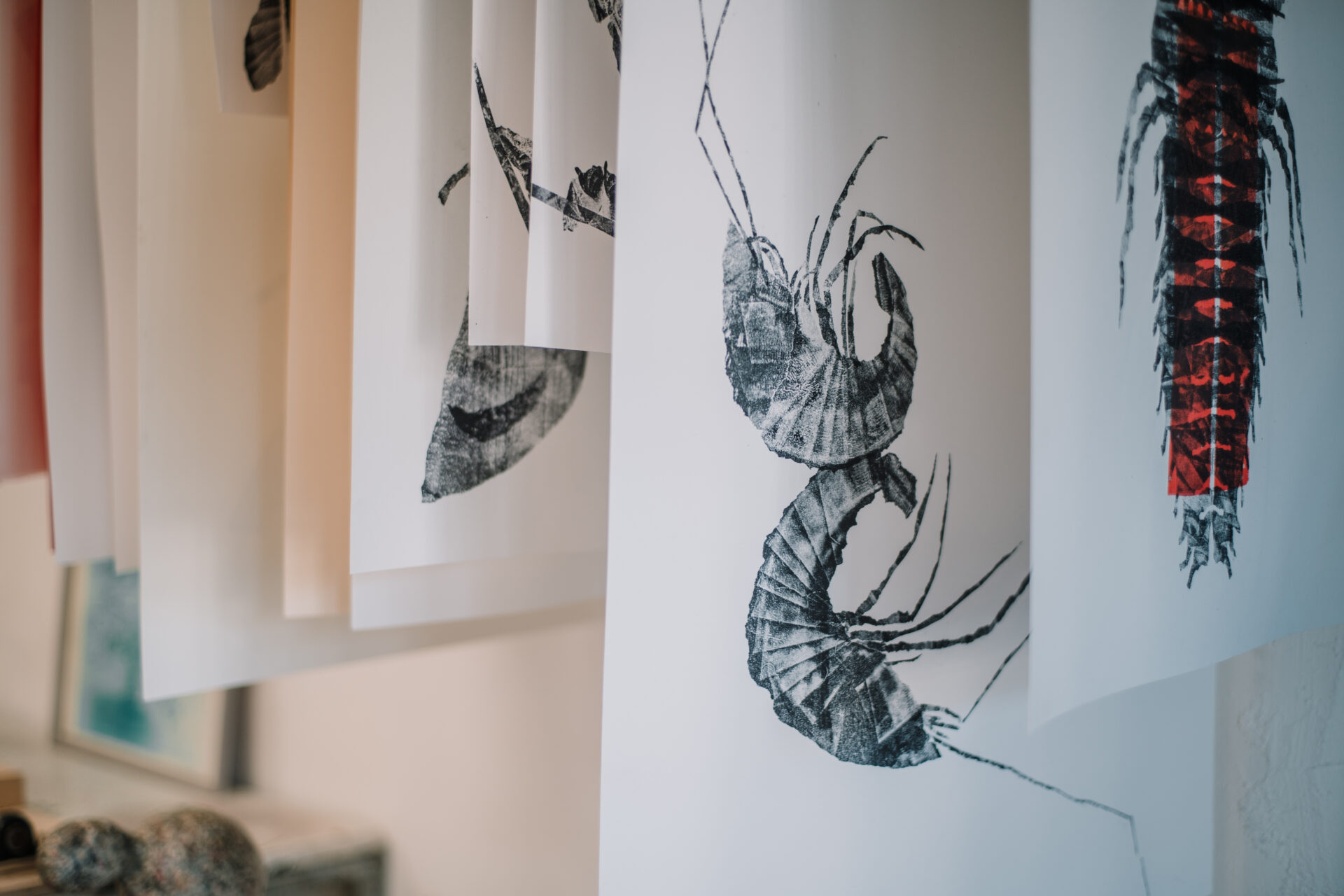Appias Albina (Jevgenija Jones) is a Lithuanian artist who creates experimental depictions of animals and natural forms through an assemblage of unusual patterns. Albina starts her pieces by collecting textures from the natural and man-made world, through the use of carbon-copy paper thermal transferring, which she then arranges on paper and supplements with graphite detail. The result: pelicans consisting of leaves, moths of bubble wrap, hot magnolias imprinted with pine needles. It’s in this exploratory approach that Albina gives familiar natural images a new edge and provides the viewer with a space for interpretation.
“A month of residency at the TYPA Museum has become a long-awaited time for me to experiment and refine many previously touched, but never fully disclosed topics. A month of wonderful acquaintances, exchange of ideas, and a time for new topics. In fact, this is a rare opportunity for an independent working artist to get some absolutely free time to develop new skills and ideas. This art residence is the best place and atmosphere!
This time I managed to experiment on several points at once. First, the ability to insert color into my established monochrome style. The possibility of using color printing inks in TYPA, gave a start to an ongoing search for color inlays in my works, which I never had done before. I worked on beetles with color input at the Museum. Beetle’s theme was inspired by the huge iron printing presses of TYPA and the wonderful Nature history museum of Tartu!
Also, in the vicinity of TYPA, I found many unusual textures, remnants of material and patterns from a nearby shoe factory. It was an amazing find and days of working on these textures and transferring them to carbon copy paper. A couple of weeks later, still in TYPA, some of these textures became the basis for a completely new image of shrimp and other images of scaly insects and animals in my works.
Another important experiment, which took place this month and has also received a continuation, is the transfer of my graphic images of a carbon monotype to a ceramic surface. The first attempts in this direction, I also owe the stay in TYPA and the surrounding area, walks and communication. This is how I came across a lovely ceramic studio next door and started a successful collaboration. I assume a long continuation in this area, and a lot of absolutely new works.
I also shared some practices in my thermal carbon monotype technique at a workshop for the museum. I was curious because I rarely do this kind of class, and now I think about continuing these workshops in the future.
I created an art book from fragments of my carbon monotype works. I learned a new skill and many small secrets in the field of book binding in TYPA, with the help of volunteers and museum workers. And I got a very good first result! Definitely only the first of many.
It is worth mentioning not only the creative and friendly atmosphere of the museum, but also the city as a whole, I was lucky to get here in May, as well as the thaw of quarantine. The city is amazing with the number of museums, galleries, universities, parks and natural areas. Nice old town. Everything is conducive to new ideas and beginnings.
I am very happy to get several new friends – unique artists, and the beginning of new joint projects. The only thing to regret is that it was too short. I wish I could stay longer than one month 🙂



